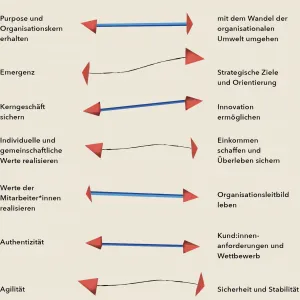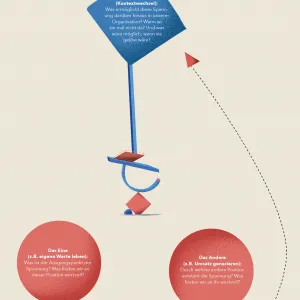However, the significance and speed of the drivers mentioned above are currently more fundamental than in the past and require creativity, vision and major decisions. They lead to areas of tension in which organizations must navigate and continuously balance their own position. It is not just about optimizing processes or structures. Rather, it is about forward-looking, agile self-renewal (mechanisms), sometimes even radical reinvention and transformation. We call this phenomenon "adaptation movements".
Buzzwords such as New Work, agility, purpose or ambidexterity (the simultaneous and therefore "ambidextrous" management and leadership of core and innovation business) are answers to today's questions. Although these terms are diluted by their inflationary use, they nevertheless show what questions are at stake against the backdrop of change: "What is the purpose of our organization (also in the future)?", "What specific strategic goals are derived from this?", "Do we want to make a contribution to society and if so, what? And how?", "What individual, community and social values guide our actions?", "How can and should employees actually help shape our actions?", "What do users of our products and services expect from us?", "How do we want or need to organize ourselves in order to achieve our goals?", "How do we ensure our survival and remain connectable?". There are no unique and clear answers to these questions, especially not in today's world. All these questions have to be negotiated and balanced again and again. We address these tensions and work with our clients to find a productive way of dealing with them.







